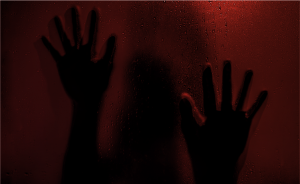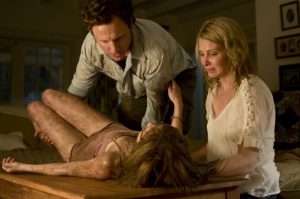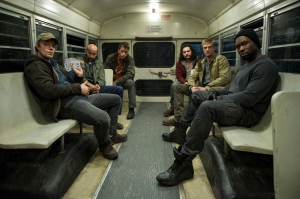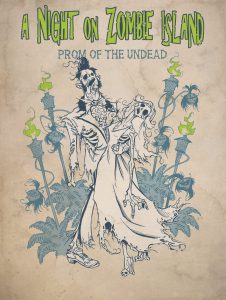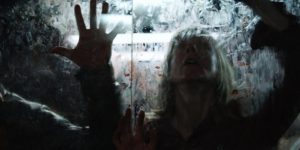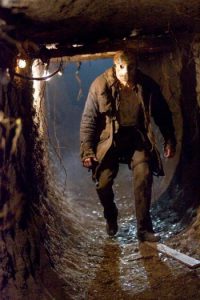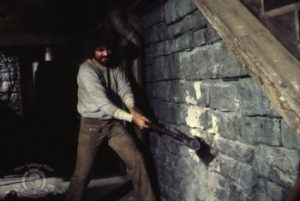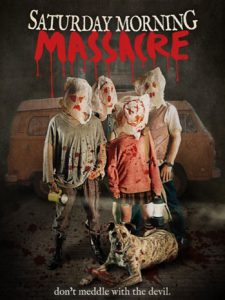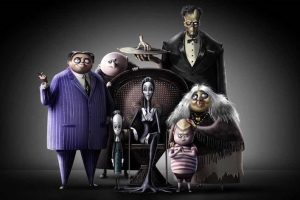Top 10 Giallo Horror Movies
The Giallos (or Gialli, in the native tongue) are a type of Italian literature and film that originally derived from early American crime pulp and mystery novels. The word giallo is actually Italian for “yellow” and refers to the genre’s paperback novels with yellow covers. Where the novels were primarily literal adaptations of their American counterparts, their cinematic equivalent took advantage of the medium’s new techniques to make something entirely unto itself.
These films began to build steam in the late 1960s, flourished in the 70s and tapered off by the 80s, but their influence on the modern slasher can never be underestimated. These Italian thrillers retain whodunit roots, but typically add a heavy dash of grand guignol and sexual overtones, while employing opera’s expressive use of music to further season the pot. Strong psychological themes, extended murder sequences and ample amounts of female flesh are today’s specials; convoluted plots on the house. So slip on your best pair of black gloves and join me in a slice of garlic, as we count down my Top Ten Giallos.
10. Blood And Black Lace (1964)
Mario Bava single-handedly established the basic structure of the Giallo with 1963’s The Girl Who Knew Too Much. The obvious nod to Hitchcock enforces the English influence over the genre, but Bava’s idiosyncratic style and vision give it its own identity.
With Blood And Black Lace he would cement the template and inspire hundreds of imitations in its wake. We have a mysterious masked killer in a boarding house stalking beautiful women – need I say more? It is more straight forward than most of the offspring; however, Bava’s gothic sensibilities and skill at creating tension make it required viewing for freshmen of the genre. Giallo 101, no question.
9. Seven Blood Stained Orchids (1972)
Genre-hopping expert Umberto Lenzi throws his capable gloves into the ring with this assured and solid entry starring Antonio Sabato. It’s fairly tame by most standards, but the performances are strong and it offers an easily coherent storyline which is always welcome in these parts.
There is a surprising drill-kill among the tempered violence and it displays considerable skill in ducking and covering before the knockout. A middle-weight contender, all things considered, but it can definitely hold its own.
8. The Strange Vice Of Mrs. Wardh aka Blade Of The Ripper (1971)
One word – Edwige. Give me an indulgent moment here. Thank you. The incomparable beauty that is Mrs. Fenech stars alongside genre regular George Hilton in this heady brew of mystery and perverse sexuality. Fenech plays an independently minded woman who becomes convinced that one of her lovers is a maniacal killer. Or is she just going mad?
This well paced and kinky thriller has good performances, beautiful cinematography, an engaging story and an evocative score. And luckily for us, our leading lass isn’t shy about displaying the goods either. All The Colors Of The Dark reunites Fenech with Hilton, and also comes recommended, but Vice is the stronger of the two. Director Sergio Martino definitely gave Argento a run for his money when it came to the 70s thriller.
7. Case Of The Scorpion’s Tail (1971)
Martino and Hilton strike again in the same year, this time with the comely Anita Strindberg in tow and audio sensualist Bruno Nicolai supplying the soundscape.
It is occasionally weighted down by some lengthy dialogue, but it remains a highly stylized and grisly feast for the eyes nonetheless. Strong set pieces, superb camera work and a pretzel of a plot that keeps you guessing till (almost) the end give this enjoyable Giallo some surprising sting.
6. Don’t Torture A Duckling (1972)
Spaghetti nightmare specialist Lucio Fulci enters the fray with this lurid entry that ducks away (couldn’t resist) from the usual formula. InDuckling, the bodies of children are turning up in a rural village and a reporter attempts to uncover the culprit. The intriguing plot with red herrings aplenty has a touch of witchcraft, Barbara Bouchet in the buff and a few very shocking sequences; easily securing its placement in my top ten.
It’s not as visually graceful as some of its peers; however, it remains one of Fulci’s most articulate and entertaining films. The narrative tackles bigger issues than just the surface spectacle of child murder, masking comments on both society and religion, making it very controversial upon initial release.
5. Torso (1973)
Sergio Martino brandishes his formidable “chops” yet again. A group of promiscuous coeds retreat to a remote country villa to escape a series of sexually charged murders on campus.
Soon the unsuspecting girls lose both their inhibitions and their lives. Martino keeps a firm grip on things while never getting too graphic or lecherous. There is plenty of sex and violence to go round, don’t get me wrong, but tension and atmosphere play an equal role in this well measured offering.
4. The House With Laughing Windows (1976)
A painter restoring a fresco in an old church becomes obsessed with finding out what really happened to the original artist and what inspired his uncanny visions.
Prolific director Pupi Avati succeeds here in crafting an exceptional mystery without succumbing to the usual exploitive rudiments of his fellow paisans. Deliberately paced, but chock full of tense, creepy moments and an unsettling vibe that makes this selection anything but laughable.
3. Bird With The Crystal Plumage (1970)
Enter the Dario. Bava might have cleared the path, but it was Argento who constructed the cornerstone of the Giallo proper. His debut feature lacks much of the flash and visual poetry of his later features; however, Argento proves he can create a suspenseful atmosphere alongside the best.
He takes liberal queues from both Hitchcock and Bava, but infuses them with his own sense of the macabre to make a solid whodunit with marginal plot holes. An exceptional Ennio Morricone score adds further luster to this very reputable affair. The maestro quickly dominated and influenced the entire genre before moving on into the fantastic withSuspiria.
2. Dressed To Kill (1980)
Tut, tut. Don’t even say it, I know what you may be thinking, but work with me here. What do Americanos know about this distinctly Italian flavored export? Well if Brian DePalma’s Dressed To Kill has anything to say about it – plenty. All the usual plot markings are here: an innocent witness to a brutal murder must take on the role of amateur detective to hunt down a killer and prove their innocence (also a Hitchcock staple); psycho-sexual dramatics; several shocking set pieces; and yes, even a black-gloved killer.
DePalma’s fluid direction, amazing skill at composition and employing the tremendous talent of Italian composer Pino Donaggio combine to assemble one of the most striking excursions into the genre from either side of the Atlantic. I like to dub it ‘the greatest Giallo Hitchcock never directed’, but that may only make sense in my world. The Eyes Of Laura Mars could be considered another stateside attempt at the foreign formula, but it is of less consequence.
1. Deep Red (1975)
Dario Argento’s unquestionably brilliant magnum opus in the field. Everything about this Giallo is as it should be. It is intelligent, imaginative, suspenseful, shocking, well conceived – and if I may be so bold – almost transcendental. Argento’s direction deftly weaves a mystery not only through the complexities and structure of the script, but through his use of the camera, lighting and score as well.
With every step questions are raised in a literal and visual sense and the response is further deception. Goblin’s pulsative score is in fact integral to the movements of the film, quite literally making Deep Red a true opera of bloodshed; a dance of death; a masterpiece in the genre. I honestly struggled with which of the last two films deserved the highest praise, but felt compelled to give it to the Maestro for being instrumental in establishing the popularity of the genre as a whole and giving it much of its distinguished aesthetic.



